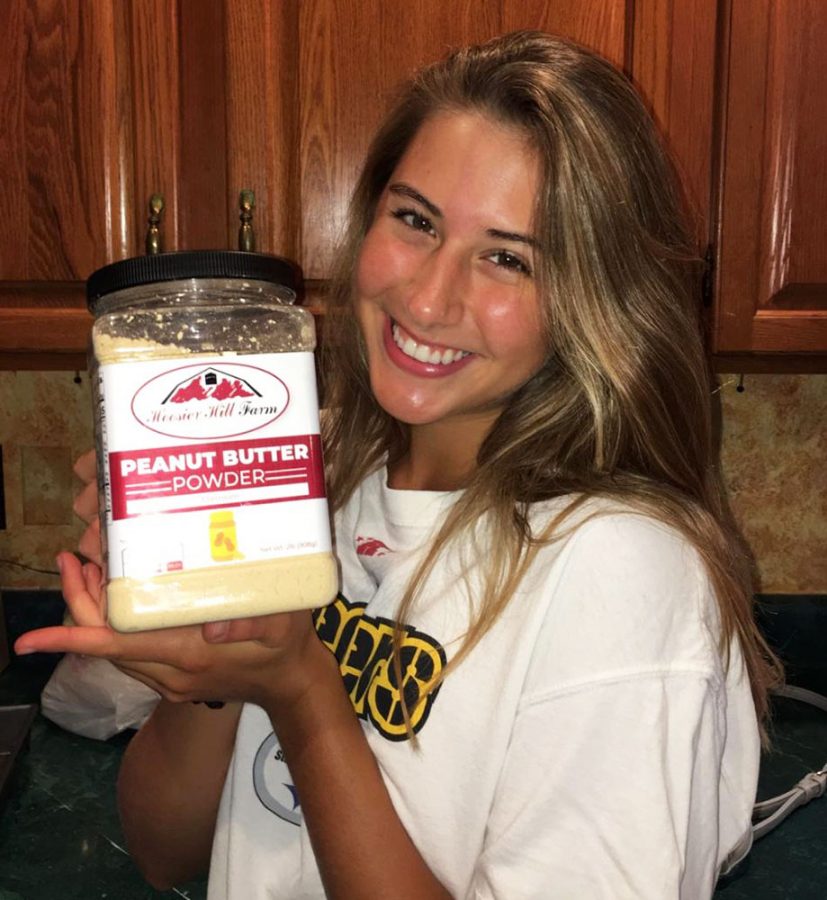Core Myths and Powdered Peanut Butter?!
Welcome health junkies and gym rats. This blog is extremely important because if you don’t listen, you will probably injure yourself. That is true about nearly all my blogs but this one could be detrimental to your physical health in years to come.
A common phrase is
“Oh my god I just want abs!”
Or
“I just want a flat stomach”
Personally, I’ve said both of these phrases for years. It’s always been of the utmost impo rtance for me to have that toned flat stomach. This summer, I got a personal trainer to help me with my fitness goals. I really just wanted to push myself and see what I could accomplish, more importantly with correct technique and form.
Anyways, when I told my trainer that I so desperately wanted abs, she replied,
“You’ve got em”.
I think everyone needs to understand that: you have abs, no matter if they’re visible or not. Core strength is needed to simply hold your torso up, so yes, everyone has abdominal muscles.
Even with this information, I know you still want that six pack, but let me inform you on some tea that no one talks about: the back of your core.
Doing hundreds of crunches is alright for your front panel of abs, but you’re not balancing it out with back crunches. How often have your heard about/had back pain? You could help prevent that by strengthening your whole core.
Throw in some of these core exercises to decrease the risk of back pain and give you a stronger core in general.
- Kneeling Extension
Start this move by kneeling on all fours with your hands beneath your shoulders and your knees directly below your hips. Tighten your core muscles and slowly lift your right arm and extend it straight forward. Slowly lift your left leg and extend it straight back, with your toes pointed down. Hold for 10 seconds and slowly lower to starting position.
- Hip Lifts
To strengthen your core muscles, lower back and buttocks, try this simple exercise. Lie on your back with your knees bent and with your arms flat on the floor on either side of you. Rotating your pelvis and tailbone down, tighten your core muscles and push your lower back into the floor. Holding this position, slowly lift your midsection off the ground, using your legs, arms and shoulders to balance. Hold in an elevated position for 10 seconds, and slowly lower to starting position, relaxing the core muscles.
- Abdominal Chair Crunch
Lying on your back with your lower legs resting comfortably on a chair, place your fingers gently behind you head and lift your chin to the ceiling. Tighten your abdominal muscles and use these muscles to slowly elevate your shoulders off of the floor – this will cause your stomach to crunch together and you core muscles to contract. Slowly lower back to starting position.
- Plank Hold
Plank holds are an excellent way to strengthen your core muscles and lower back muscles. Lying face down on the floor, tuck you toes into the ground and place your elbows on the ground on either side of your body. Keep your stomach muscles tight and slowly raise your body up off the ground and hold in an elevated position. You must keep your core muscles tight and your bottom lifted as high as your shoulders to avoid strain on the lower back. Hold for 10 seconds and slowly lower to starting position.
Powdered Peanut Butter
I had an addiction to peanut butter. It was bad. I couldn’t go a day without it. Thank goodness I found a healthier alternative because I was just eating too much pb in my opinion.
Powdered peanut butter was my savior.
I first discovered it last year but since buying it originally I resorted to my old ways of regular pb.
Most people absolutely hate powdered peanut butter, and I will admit it is more of a peanut paste. I buy it in bulk from Amazon for $12 for two pounds of peanut powder.
To make the peanut paste, you put one to two tablespoons of the powder in a bowl and add water and optional honey until you get the taste and texture you desire.
Here’s the best part, and mostly why I made the switch:
“With most of the fat gone—powdered peanut butter has about 85 percent less than regular—you’re left with protein and fiber. A tablespoon has about 25 calories, 1 gram of fat, 3 to 4 grams of protein, and 1 gram of fiber. Regular peanut butter has the same protein and fiber counts, but has 96 calories and 8 grams of fat per tablespoon.”
LIKE WHAT????
If you or a loved one is heavily addicted to peanut butter and wants to cut back on oil, fat, and sugar, give this product a try.

I am Caroline Ejzak. I am a senior as well as a: tennis player, master baker, La Croix enthusiast, early bird, black coffee drinker, math despiser, middle child, Sagittarius, and health freak. Recently, I've started calling people "Honey", I think it keeps true to the nickname "Sweet Caroline". Just tryin' to live up to my name. Have a good day, be kind to yourself, and drink some water.

